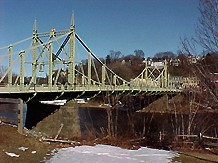 |
Easton- Phillipsburg Bridge also known as the Northampton Street Bridge |
|
Bridge Type: cantilever truss |
 |
Easton- Phillipsburg Bridge also known as the Northampton Street Bridge |
|
Bridge Type: cantilever truss |
BRIDGE HISTORY
James Madison Porter III, a native of Easton designed this bridge. He was a civil engineer and a former instructor at Lafayette College in Easton, Pennsylvania. Porter's bridge design resembles a suspension bridge.
BRIDGE STRUCTURES
The truss was divided into 22 25' panels, formed into 125' anchor spans, 125' river cantilever arms, and a 50' center suspended span.
 |
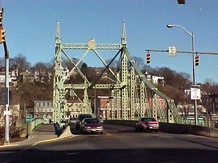 |
|
| This is a view from the south side of the bridge. | Here' another view from the Pennsylvania side of the bridge. The roadway is 32' wide. | |
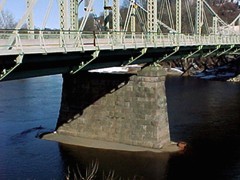 |
 |
|
| One of two stone masonry piers used to support the bridge is shown here. | This is a view of four bearings located under the main truss vertical members on the river piers. | |
 |
 |
|
| Two sidewalks are cantilevered outside the trusses with a width of 7'6", one on each side of the bridge. | Note the triangulation below and outside the sidewalk cantilevers. | |
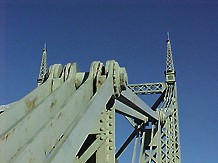 |
 |
|
| Most of the tension members, the top chords and most diagonals, are made of two or four steel eyebars. | On a simple level, these tension members are a rigid wheel and axle system. | |
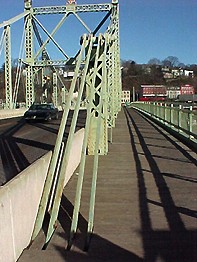 |
||
| Truss joints are connected with pins ranging from 5 1/2" to 8" in diameter. | Medium steel, soft steel, wrought iron, and cast iron are used in the construction of this bridge. | |
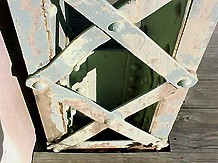 |
||
| Eyebar members are a variety of lengths and sizes. | Box sections with double lacing serve as vertical structural elements. |
|
|